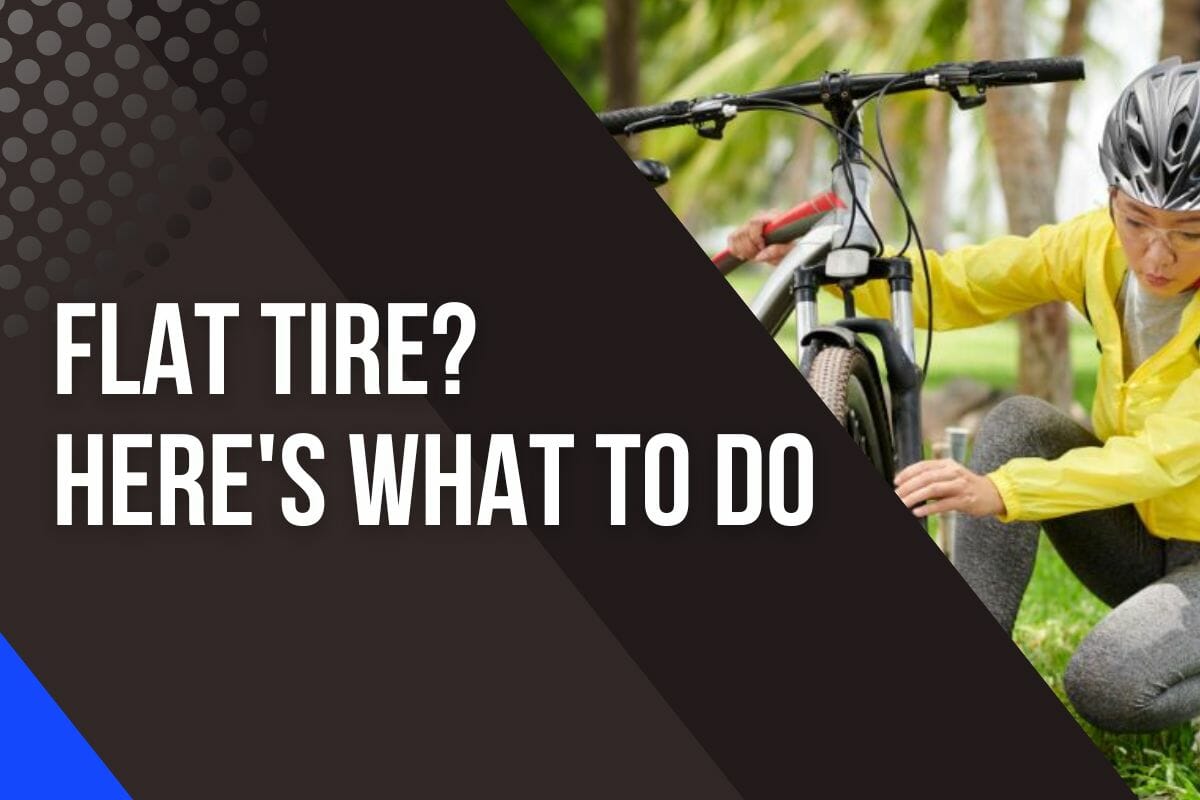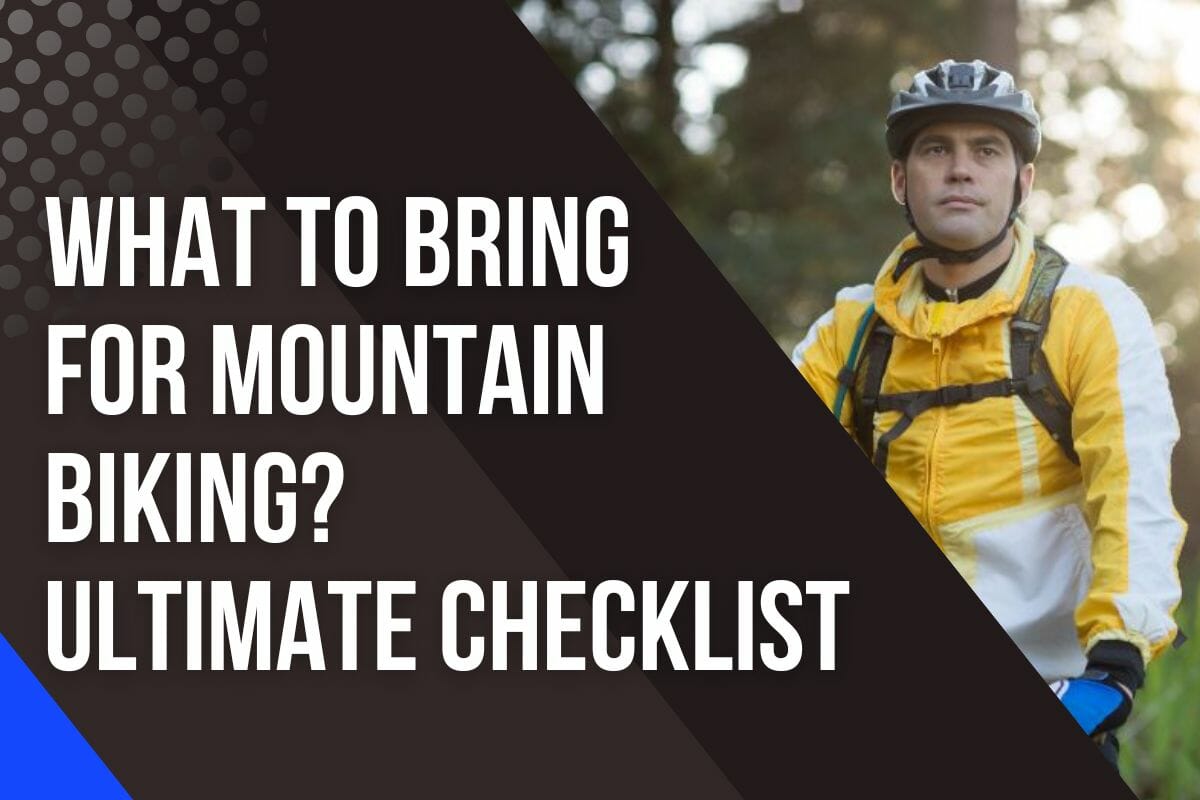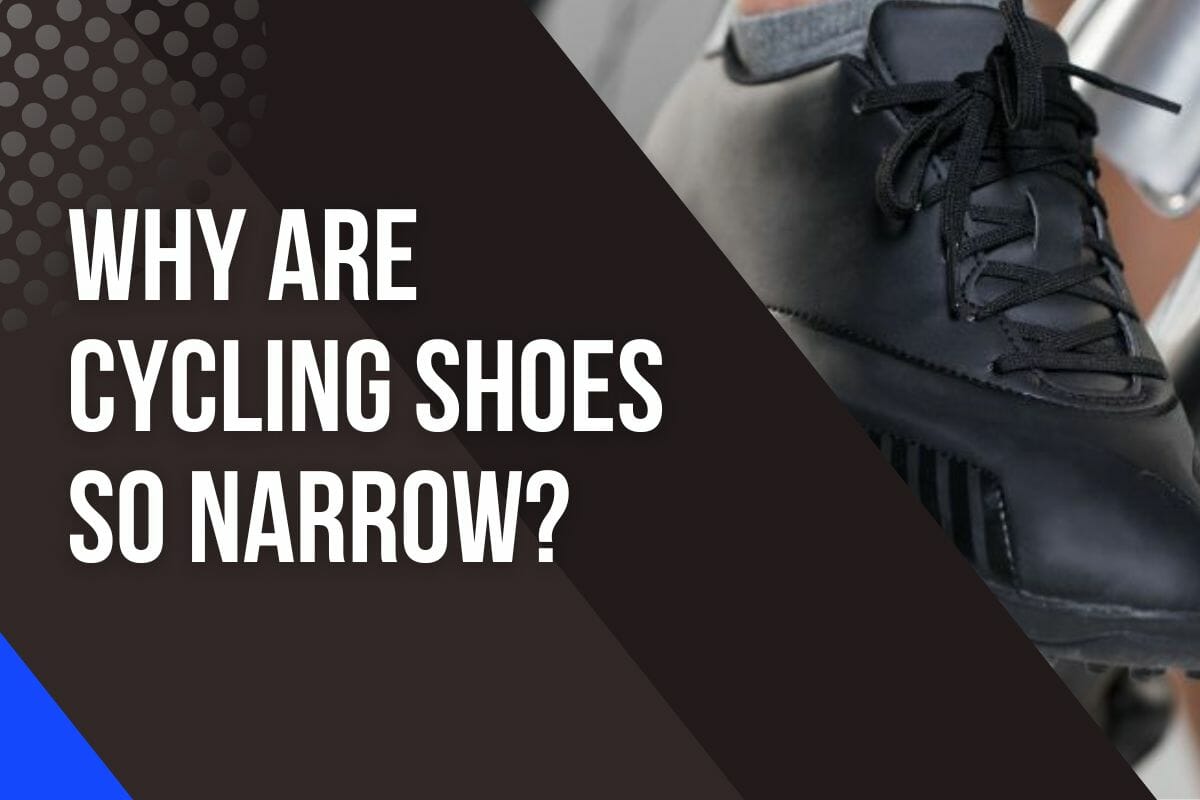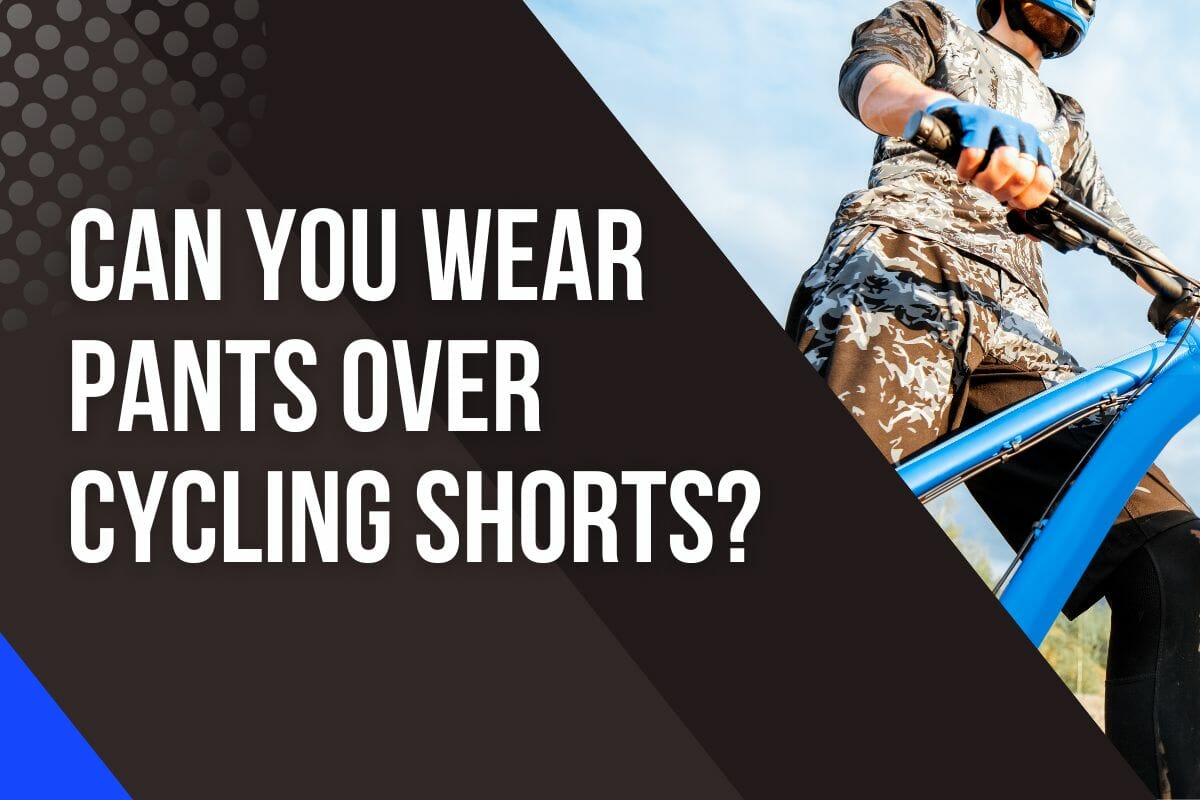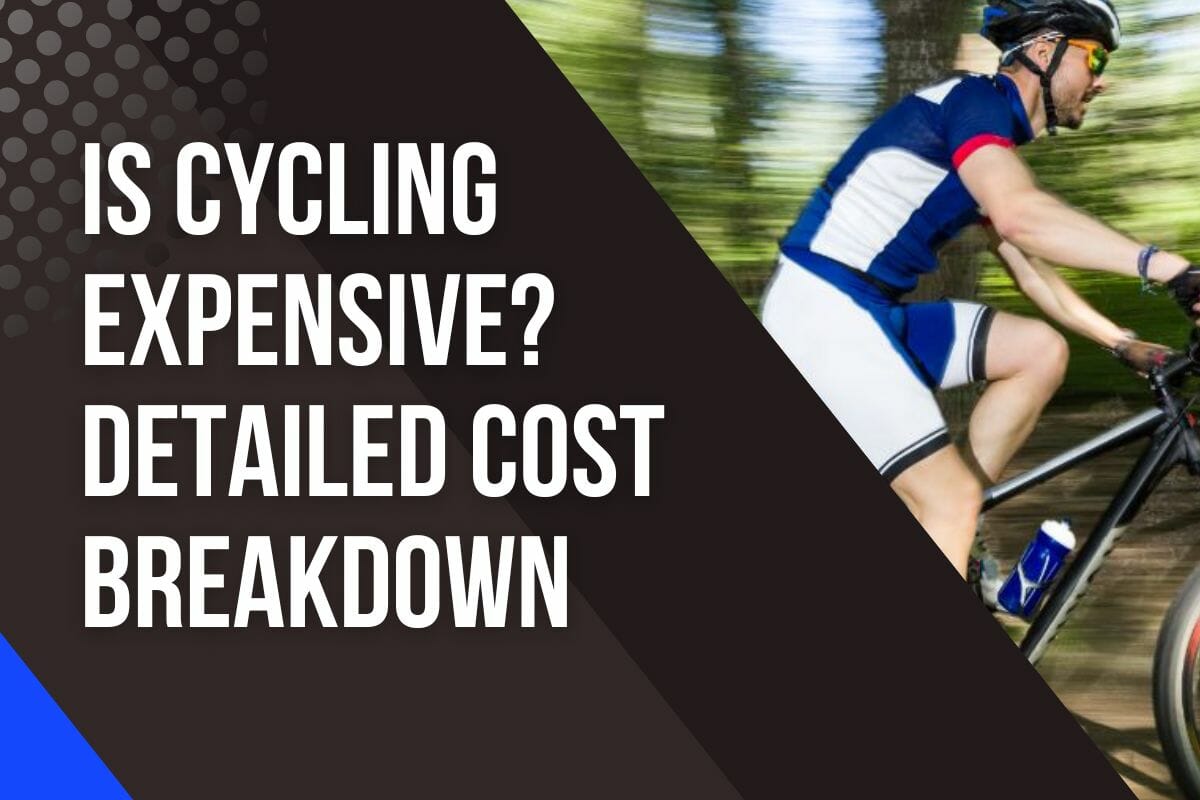Why Are Bike Seats So Uncomfortable? 5 Easy Fixes
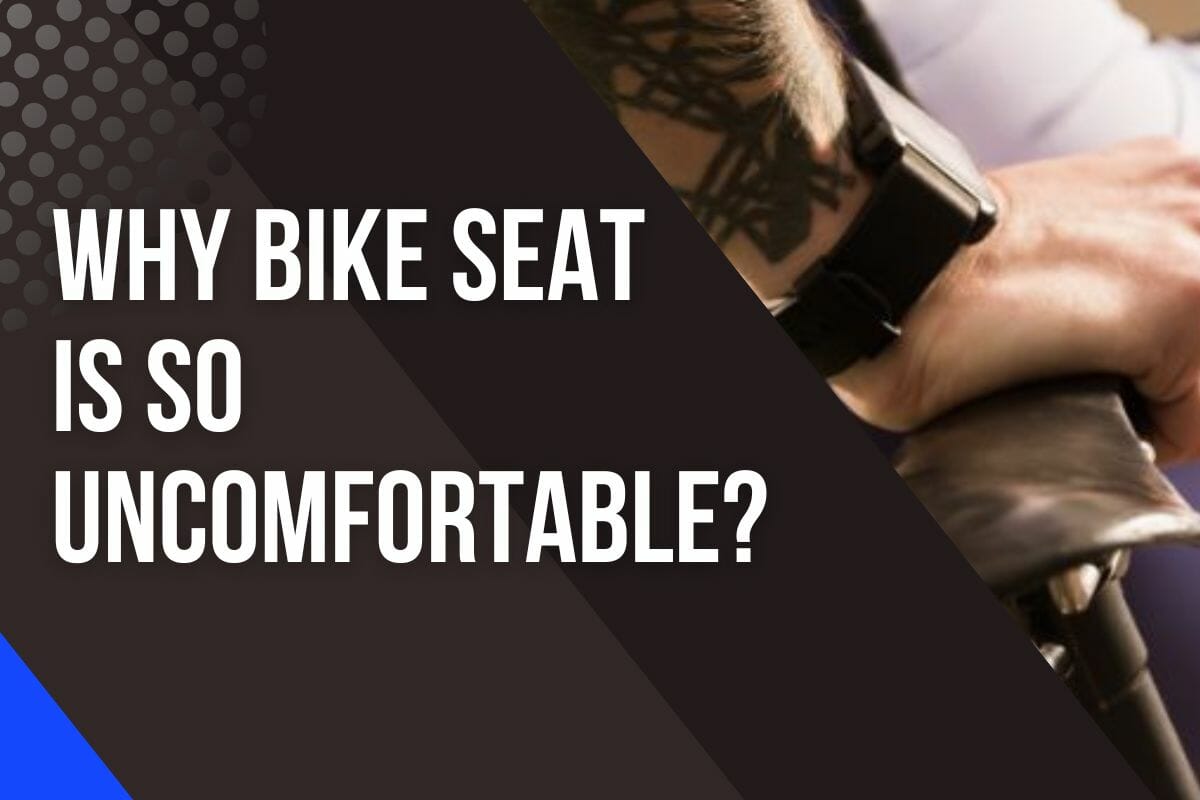
Have you ever gone for a bike ride and felt like your seat was too uncomfortable to enjoy it? You’re not alone.
Many people feel that cycling seats are generally unpleasant and can make the entire experience of riding a bicycle less enjoyable.
But why is this so?
Bike seats can be so uncomfortable because of incorrect bike sizes, improper handlebar positions and even wrong clothing choices.
Below, I’ll explore ways to make your bike seats more comfortable.
So, if you’ve been struggling with an unbearable seat on your bike rides, read on.
In a hurry? Jump directly to the eight tips on how to make your bike seat more comfortable.
The Unpleasantness of Cycling
It’s a conundrum that many cyclists find themselves in: Why are cycling seats so uncomfortable?
According to some estimates, more than 85 percent of cyclists experience discomfort while riding their bikes.
When I started biking, I thought the skinny and stiff seats were difficult to sit on for long periods of time, only causing me sores and back pains.
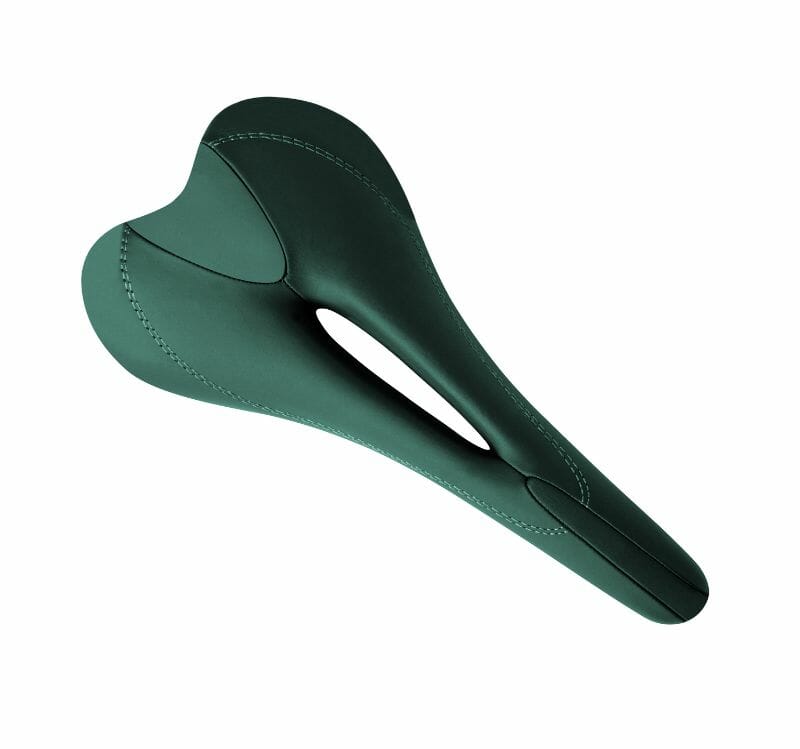
Bike shop professionals explained that the shape of the seat is meant to support our sit bones, not our whole-body weight.
The unusual shape allows us to move our lower limbs freely during cycling, improving our overall performance.
Moreover, saddle height and proper positioning are also critical for comfort during a ride.
Here’s a video explaining the proper way to boost your bike seat comfort.
If you have the wrong size or an inadequate position on your saddle, it can cause soreness in the nether regions after longer rides.
This means you need to take into account factors such as frame geometry, handlebar placement, foot size, and pelvic width when selecting a saddle that works best for you.
To learn more about the root causes behind uncomfortable bike seats, stay tuned for the next section!
Root Causes of Bike Discomfort
As I rest my feet on the pedals, ready to take off for a ride, an old familiar feeling of discomfort creeps up from deep within.
It is as if thousands of tiny needles were pricking me at once; why does cycling have to be so uncomfortable?
Below are some most common root causes for your discomfort.
Improper Bike Size and Fitting
Figuratively speaking, if you’re not careful while shopping for a bike, it’s like sitting on an ironing board – ouch!
I thought I was stuck with a horribly uncomfortable ride even though I had all the best gear available.
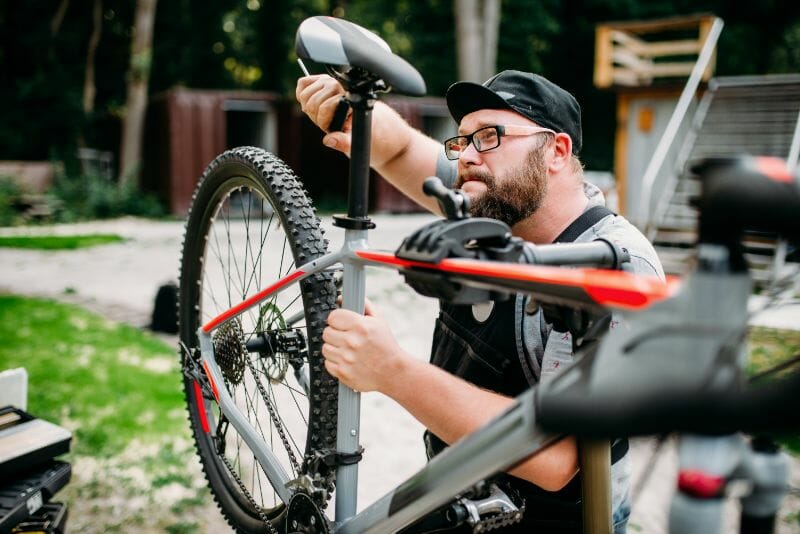
What I didn’t realize was that having the wrong size bike greatly affects our seating position and comfort.
Bikes come in all sizes. If your bike isn’t the right size for you, then chances are your seat won’t be comfortable either.
This may eventually lead to various painful issues affecting your knees, back, neck, and wrists. (1)
That’s because different sizes offer varying angles and heights for the saddle, which will affect how much pressure is placed on certain areas of your body when riding.
This problem from pressure may also cause erectile dysfunction in men. (3)
A perfect saddle height is determined by our leg length and the inseam measurement. Here’s a video on how to adjust your bike seat.
If your seat is too low, it can lead to knee pain when pedaling over extended periods of time.
While there are several factors at play here, having a bike with a properly sized frame should always be a priority.
Wrong Handlebar Position
It’s like a game of Jenga, the wrong handlebar position can topple your entire ride.
As if an invisible hand is pushing you off balance and making each pedal stroke feel like running upstairs with weights strapped to your back.
I had noticed that I felt like I was leaning too far forward or backward while riding but had no idea why.
After doing a bit of research, I learned that it all comes down to having too high or low handlebars.
The incorrect positioning gave me a shorter or longer reach than what was necessary, which in turn caused me to feel soreness from my bike seat.
It might not seem like much but having them too high or low can make cycling infinitely more uncomfortable than it needs to be.
A good rule of thumb is that when sitting on the bike, elbows should be slightly bent which will help riders find the optimal bar height for their body type.
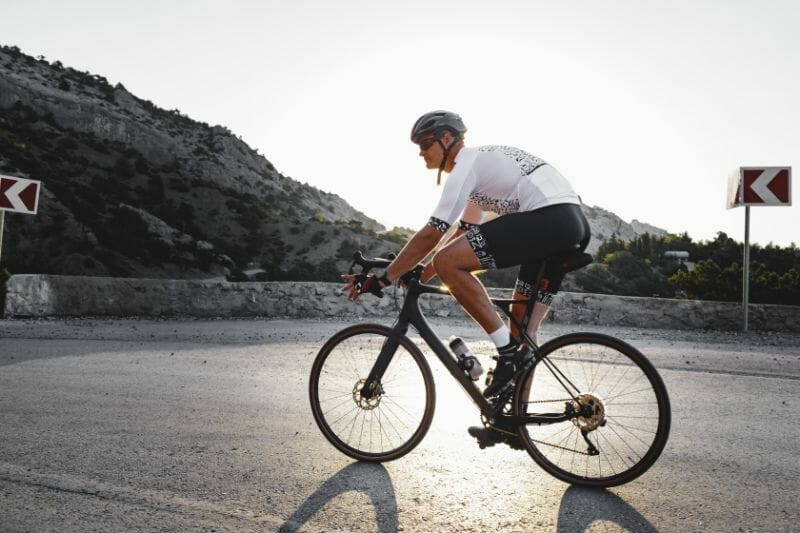
Additionally, getting the correct stem length and angle makes sure everything fits together properly. (2)
So you can stay comfortable during long rides without any unnecessary stress points from poor positioning.
Poor Clothing Selections
Imagine a long, hard surface pressing against your body.
Even if you have the right handlebar position, cycling can still be an uncomfortable experience if you don’t wear the proper clothing.
If you don’t have the necessary padding for the soft tissue in your nether regions, then you’re in for a lot of discomforts.
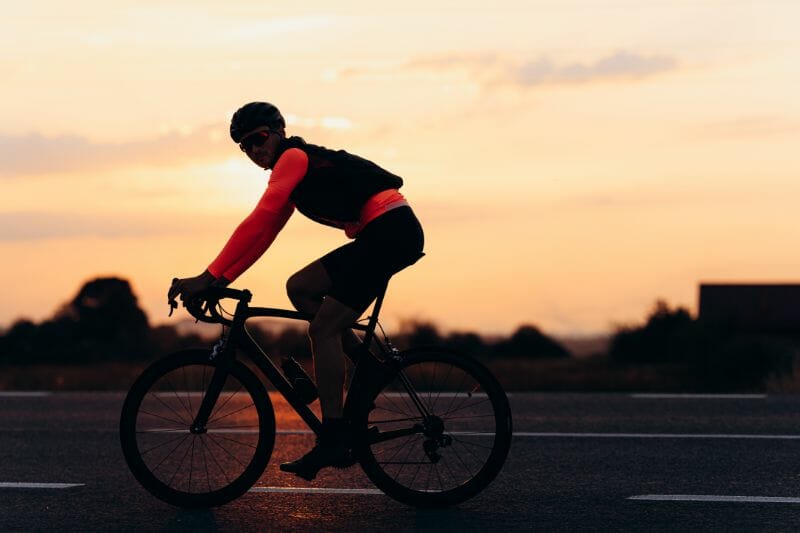
Padding is key when it comes to choosing the best clothes for cycling.
Look for padded bike shorts made from breathable materials that fit snugly around your waist and hips – this way they won’t move around during your ride or cause chafing.
If wearing regular shorts isn’t your thing then opt for baggy cycle-specific ones instead, which often come with integrated padding and adjustable straps to keep them secure as you pedal.
Even though it may seem like an extra step at first, doing so really pays off in terms of comfort while out on the roads (or trails).
A Saddle, Not A Seat
Why are cycling saddles so uncomfortable and seemingly unbearable after only minutes on the bike?
Well, for starters there’s the shape; most standard cycle seats have a narrow design which makes them difficult to sit comfortably for long periods of time.
The result is an uncomfortable ride as pressure builds up in certain areas of the seat instead of being distributed evenly across your body.
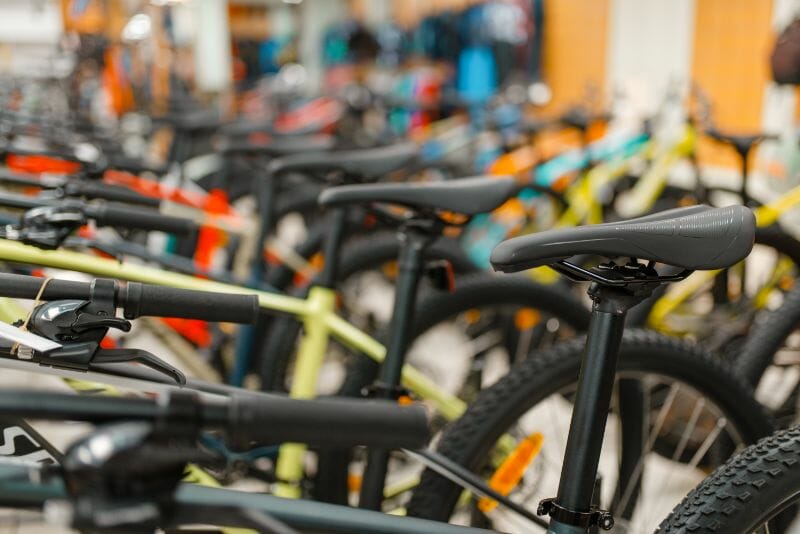
Additionally, many are made out of vinyl or plastic materials which can be abrasive when riding for extended amounts of time – not exactly ideal conditions for comfort!
The solution may not be as straightforward as changing your clothing.
A wider saddle or one with softer padding can help reduce pressure points and improve blood flow throughout your body while riding.
8 Tips to Make Your Bike Seat More Comfortable
Whether it’s a long cross-country ride or simply pedaling around town, an uncomfortable seat is enough to make anyone want to give up and go home.
But don’t despair!
There are ways to make your bike seat more comfortable for those longer rides.
You deserve comfort while you’re out there on two wheels! Read on.
1. Not One Size Fits All
It’s a commonly accepted belief that one size fits all when it comes to cycling seats.
But is this really the case?
I know from experience how important having an ergonomic bike seat can be.
I always make sure that my seat isn’t too wide or too narrow for my body shape, as well as ensuring the padding is just right.
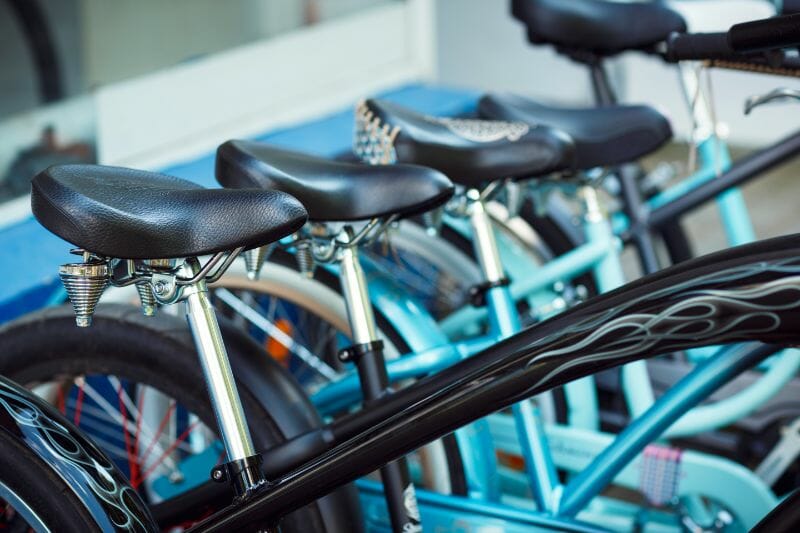
Otherwise, I’m left feeling sore after a ride!
I was using a standard bike seat without considering my own anatomy.
After days of discomfort on the bike and soreness after each ride, I knew something had to change.
One of the first things I looked into was getting a better saddle for my road bike.
If you don’t have enough cushioning, your behind will take a beating after a long journey.
Some have wider saddles, others are softer with thicker padding and some even come with gel inserts.
After trying out a few different models at the local bike shop, I eventually found one that felt good and relieved some of the pressure on my ischial tuberosities (the bones you sit on).
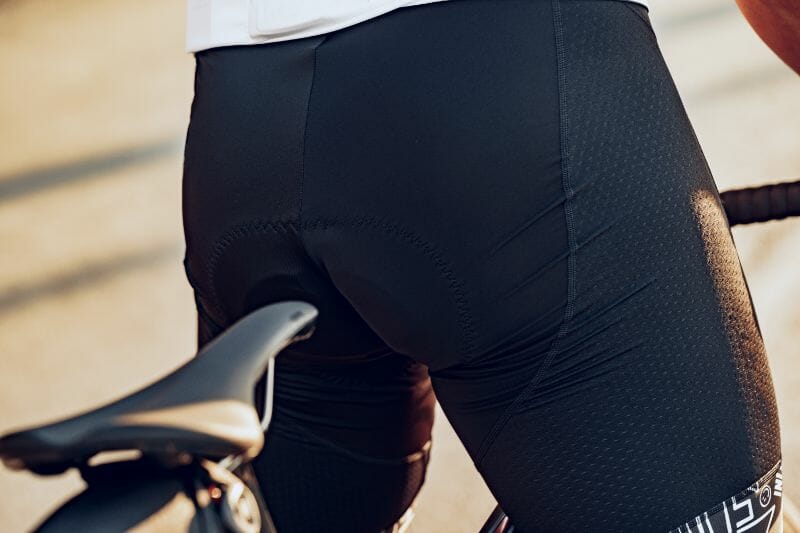
Furthermore, if the saddle isn’t correctly positioned in relation to your handlebars then it can cause pain in your wrists and arms too.
The bottom line is: finding a comfortable bike saddle doesn’t mean settling for something generic off-the-shelf.
Once you find your match you’ll never go back!
2. Proper Form And Endurance
Pedaling painlessly and properly is paramount for a pleasant cycling experience.
To prevent discomfort, proper form and endurance must be an integral part of your riding routine.
It’s not only about comfort but also safety.
Poor posture while cycling can cause serious long-term injuries to the back, neck, and shoulders.
The key to successful bicycle seat comfort lies in the cyclist themselves.
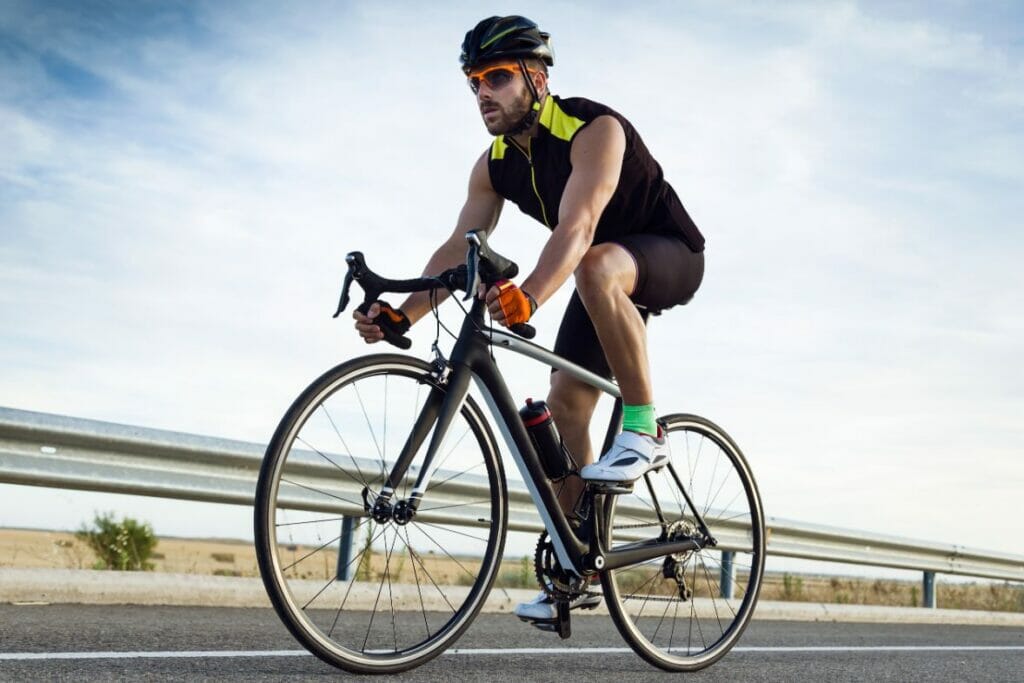
For starters, it’s important to ensure that one maintains correct posture while seated – upright but leaning slightly forward with feet firmly planted on both pedals.
Additionally, a good balance needs to be achieved by shifting weight evenly between both sides of the body.
This will help keep the spine aligned correctly throughout the ride.
Finally, having sufficient endurance during longer rides will help make sure riders don’t get tired easily which could lead them into bad habits like slouching or hunching over handlebars.
No matter what kind of bike seat you have, proper form and endurance are essential for comfortable rides over extended periods of time.
3. Different Seats For Different Riding
Different types of riding require different types of seats.
Some cyclists may even need multiple bikes with different seating styles.
For example, when racing, a more minimalist and aerodynamic design is often favored as your body weight is supported more by your legs and handlebars than your seat.
Their thin, aerodynamic saddles prioritize performance over cushioning – not ideal if your goal is leisurely rides around town!
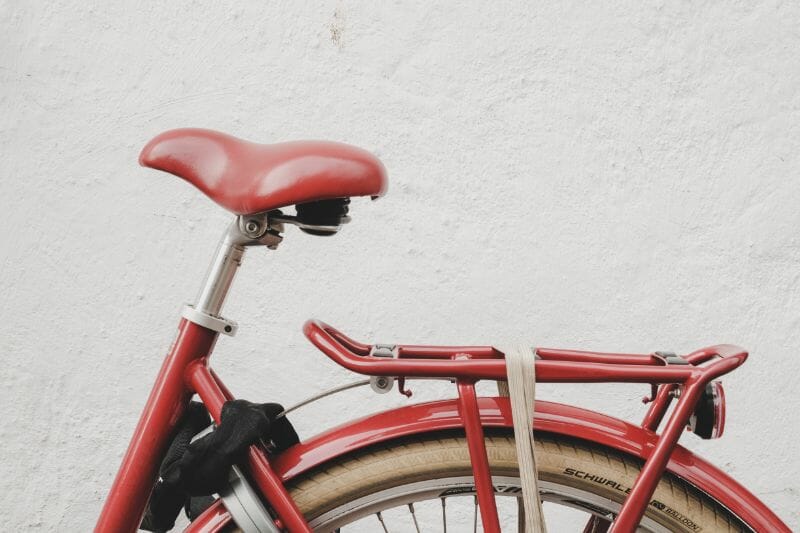
On the other hand, for less aggressive rides a slight curve in the design of the seat can help relieve pressure on parts of the body that make contact with the seat.
This can provide greater comfort during longer rides.
It’s also important to consider wider saddles with plenty of padding if you’re going to be spending long periods of time on your bike.
4. Different Seats For Different Terrain
As any cyclist knows, roads come with bumps, hills, and other conditions which require special attention.
For instance, if you plan on taking long rides over rough terrains like cobblestone streets or mountain trails, then a wide saddle with extra cushioning would provide more stability and support than a narrow seat designed for road biking.
For road cycling, I opted for a saddle with cut-outs in the middle to reduce pressure on my ischial tuberosities (aka nether regions).

The cut-out design helps reduce weight and allows more freedom of movement during long rides.
Knowing what type of saddle suits each terrain best will help make sure that every ride is both safe and comfortable!
5. Keep Adjusting
Ouch! Cycling seats can be incredibly uncomfortable if they’re not adjusted correctly.
That’s why making small adjustments is so important.
The first thing I do when I want to adjust my seat is taken note of the current position so that if anything gets worse, I can quickly move back.
From there, I’ll start making small gradual tweaks until I find a better fit.
With some simple adjustments, you can have a perfectly-fitting seat in no time!
6. Try A Leather Bike Seat
After doing some research, I decided to try out a leather saddle from Brooks – a popular English brand known for its hand-crafted seats.
At first, the leather cover felt hard and stiff but after a few rides, it molded to my body shape and became comfortable.
The longer I rode with it the softer it got – making for a pleasant experience even after hours of riding.
It seemed like the leather had taken on its own unique character with age and weathering that made it stand out from synthetic covers.
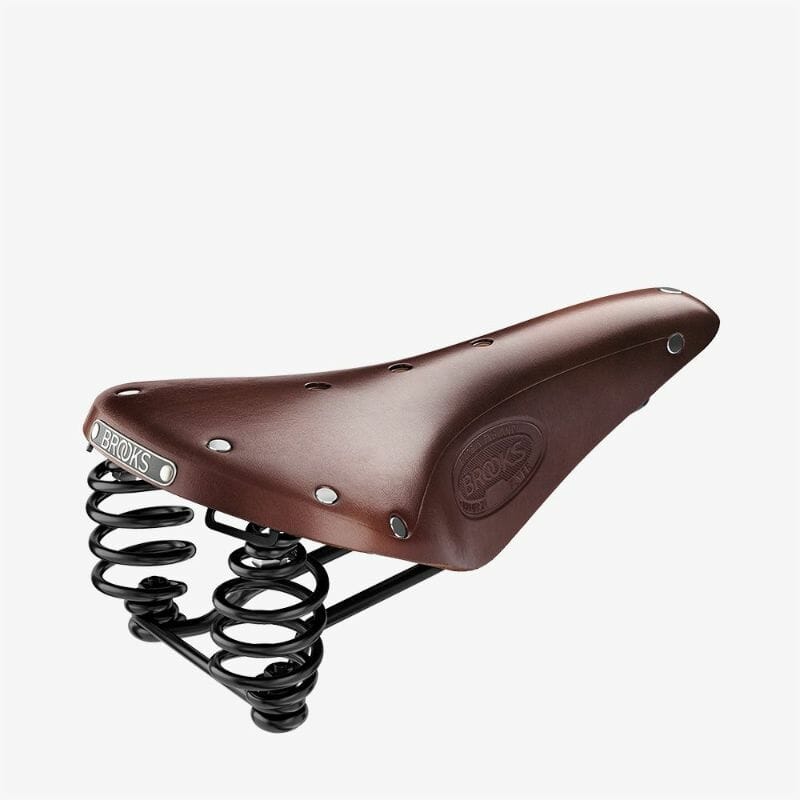
Although this type of cover needs extra care and maintenance, I feel that it is worth the effort as you get so much more in terms of comfort and style.
The leather saddle from Brooks was a perfect fit for me, and I’m so glad that I took the plunge and tried it out.
So when it comes to comfortability during rides, investing in a good quality seat cover could be well worth it!
7. Opt For Cushioned Seats
Cushioned seats can provide extra padding and support for cyclists who want more comfort during their rides.
They come in various materials like gel foam or memory foam, which makes them super comfortable.
I’ve personally found great success with gel inserts such as Kemimoto’s as they provide just enough cushion to soften the blow while still allowing me to stay in control of my bike.

They also help protect your soft tissue and nether regions from saddle sores which can be caused by too much pressure on your ischial tuberosities over long periods of time.
Although padded saddles may not be as light as their harder counterparts, they do offer some comfort and protection that softer riders will appreciate.
Applying chamois cream on a good pair of padded cycling shorts will give you a perfect saddle setup for your road bike that won’t leave you in agony after every ride!
8. Wear Cushioned Bike Shorts
Cushioned bike shorts aren’t just for the pros.
Even if you’re only riding a few hours a week, it’s still recommended that you invest in a pair of cushioned bike shorts.
The key support system is the chamois.
Which is essentially a padded area at the crotch.
And its primary purpose is to reduce road vibrations, elevate pressure points and prevent chaffing.
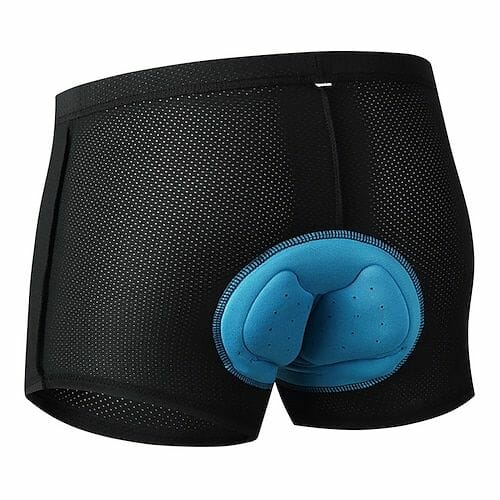
At their core, most cushioned bike shorts are made of Lycra, an elastic polyurethane fiber.
What makes this material so popular amongst cyclists is its snug fit, breathability, and durability.
But if you’re a more casual cyclist don’t let this feature put you off.
Although they are designed to offer optimal performance when undertaking hours on the saddle, cushioned bike shorts can still provide excellent protection even when used intermittently.
My Verdict
When it comes to cycling, comfort is key.
Make sure that you get the correct bike fit and form for your body type.
Additionally, finding a seat with materials specifically designed for maximum cushioning can help make even longer rides more bearable.
Don’t forget about adding cushioned padding as well – this can take away some of the shocks from bumps and rocks while helping keep your rear end happy too!
